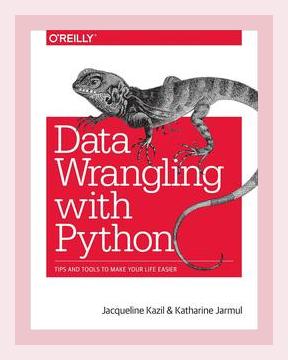Technology and Digital TransformationData Analytics
Introduction
“Data Wrangling with Python” by Jacqueline Kazil and Katharine Jarmul is a comprehensive guide that provides readers with practical techniques and tools to transform and clean data for analysis using Python. The book is tailored for data analysts, scientists, and engineers who need to handle large and complex datasets. It covers a variety of libraries and methodologies, making it a valuable resource for anyone looking to streamline their data wrangling processes. Below is a detailed summary of the key points and actionable steps from the book.
1. Setting Up Your Environment
Key Points:
– Importance of setting up a robust data wrangling environment.
– Installing necessary Python packages, including pandas, NumPy, and Jupyter Notebook.
– Utilizing virtual environments to manage dependencies.
Actionable Steps:
– Install Virtual Environment:
sh
pip install virtualenv
Create and activate a virtual environment:
sh
virtualenv venv
source venv/bin/activate
– Install Essential Packages:
sh
pip install pandas numpy jupyter
2. Data Gathering
Key Points:
– Methods for collecting data from various sources such as APIs, web scraping, and databases.
– Using Python libraries like requests for APIs and BeautifulSoup for web scraping.
Actionable Steps:
– API Data Collection Example:
python
import requests
response = requests.get('https://api.example.com/data')
data = response.json()
– Web Scraping Example:
“`python
from bs4 import BeautifulSoup
import requests
response = requests.get(‘http://example.com’)
soup = BeautifulSoup(response.content, ‘html.parser’)
titles = soup.find_all(‘h1’)
title_list = [title.get_text() for title in titles]
“`
3. Data Cleaning
Key Points:
– Identifying and handling missing values, duplicate entries, and incorrect data types.
– Using pandas library functions for effective data cleaning.
Actionable Steps:
– Handling Missing Values:
python
import pandas as pd
df = pd.read_csv('data.csv')
df.fillna(0, inplace=True)
– Removing Duplicates:
python
df.drop_duplicates(inplace=True)
– Converting Data Types:
python
df['date'] = pd.to_datetime(df['date'])
df['numeric_column'] = pd.to_numeric(df['numeric_column'])
4. Data Transformation
Key Points:
– Transforming data into the desired format.
– Using pandas for operations such as data aggregation, filtering, and merging datasets.
Actionable Steps:
– Aggregation Example:
python
df.groupby('category').mean()
– Filtering Data:
python
filtered_df = df[df['value'] > 100]
– Merging Datasets:
python
df1 = pd.DataFrame({'key': ['A', 'B', 'C'], 'value': [1, 2, 3]})
df2 = pd.DataFrame({'key': ['A', 'B', 'D'], 'value': [4, 5, 6]})
merged_df = pd.merge(df1, df2, on='key', how='inner')
5. Exploratory Data Analysis (EDA)
Key Points:
– Techniques for summarizing the main characteristics of a dataset.
– Visualization tools and libraries such as matplotlib and seaborn.
Actionable Steps:
– Summary Statistics:
python
df.describe()
– Basic Plotting:
python
import matplotlib.pyplot as plt
df['column_name'].hist()
plt.show()
– Advanced Visualization:
python
import seaborn as sns
sns.pairplot(df)
plt.show()
6. Time Series Analysis
Key Points:
– Handling and analyzing time series data.
– Using pandas time series functionality for date range generation, resampling, and rolling windows.
Actionable Steps:
– Generate Date Range:
python
pd.date_range(start='1/1/2021', periods=100, freq='D')
– Resampling Data:
python
df.resample('M').mean()
– Rolling Mean:
python
df['rolling_mean'] = df['value'].rolling(window=7).mean()
7. Handling Large Datasets
Key Points:
– Techniques for working with large datasets that don’t fit in memory.
– Using dask and chunking methods for efficient data processing.
Actionable Steps:
– Using Dask:
python
import dask.dataframe as dd
dask_df = dd.read_csv('large_data.csv')
result = dask_df.groupby('column').mean().compute()
– Processing in Chunks:
python
chunk_size = 100000
for chunk in pd.read_csv('large_data.csv', chunksize=chunk_size):
process(chunk)
8. Integrating Data Wrangling and Machine Learning
Key Points:
– Preparing data for machine learning models.
– Using libraries like scikit-learn for data preprocessing and model training.
Actionable Steps:
– Data Preprocessing Example:
python
from sklearn.preprocessing import StandardScaler
scaler = StandardScaler()
scaled_data = scaler.fit_transform(df[['feature1', 'feature2']])
– Train-Test Split:
python
from sklearn.model_selection import train_test_split
X_train, X_test, y_train, y_test = train_test_split(X, y, test_size=0.2, random_state=42)
– Training a Model:
python
from sklearn.ensemble import RandomForestClassifier
model = RandomForestClassifier()
model.fit(X_train, y_train)
9. Automating Data Wrangling
Key Points:
– Automating repetitive data wrangling tasks using scripts and pipelines.
– Utilizing tools like Airflow and Luigi for workflow automation.
Actionable Steps:
– Creating a Python Script:
“`python
def clean_data():
df = pd.read_csv(‘data.csv’)
df.fillna(0, inplace=True)
df.drop_duplicates(inplace=True)
df.to_csv(‘cleaned_data.csv’, index=False)
if name == “main“:
clean_data()
- **Using Airflow:**python
from airflow import DAG
from airflow.operators.python_operator import PythonOperator
from datetime import datetime
default_args = {
‘owner’: ‘airflow’,
‘start_date’: datetime(2021, 1, 1),
}
dag = DAG(‘data_wrangling’, default_args=default_args, schedule_interval=’@daily’)
clean_task = PythonOperator(
task_id=’clean_data’,
python_callable=clean_data,
dag=dag,
)
“`
Conclusion
“Data Wrangling with Python” provides a practical and structured approach to handling, cleaning, and transforming data. By leveraging Python’s powerful libraries, readers can streamline their data wrangling processes and focus on deriving meaningful insights from their data. The actionable steps provided in the book serve as a direct guide to implementing the techniques discussed, making the book a valuable asset for both beginners and experienced data professionals.
